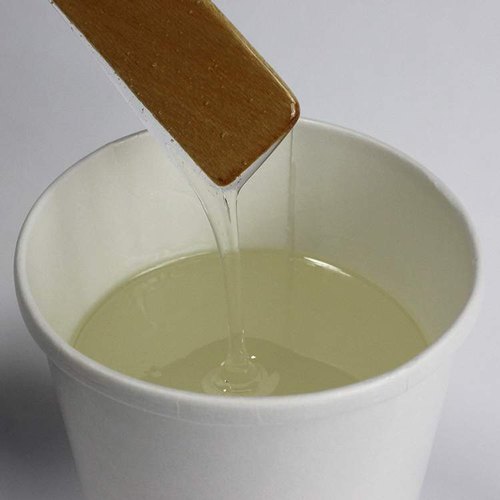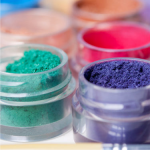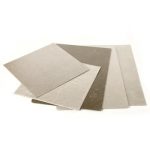RESINS:
EPOXY RESIN

Resin Epoksi

Resin epoksi adalah golongan polimer reaktif yang mengandung gugus epoksida, yaitu cincin oksiran yang merupakan cincin yang mengandung atom oksigen yang terikat dengan dua atom karbon yang telah disatukan dengan cara lain. Resin epoksi adalah polimer termoset yang mengeras secara permanen. Jika sudah mengeras, resin epoksi tidak dapat dilebur atau dibentuk kembali seperti polimer yang bersifat termoplastik.
Ada dua jenis resin epoksi yang umum digunakan berdasarkan harga dan kualitasnya: Diglycydyl Ether Bisphenol A (DGEBA) dan Novolaks. Resin-resin epoksi ini biasanya dikombinasikan dengan berbagai curing agent untuk mendapatkan sifat yang diperlukan untuk aplikasi tertentu.
Diglycydyl Ether Bisphenol A, atau biasa disebut Bisphenol A Epoxy Resin, merupakan resin epoksi yang paling populer. Resin ini dibentuk dengan reaksi kondensasi antara epiklorohidrin dan fenol. Struktur molekul fenol dan jumlah cincin fenol akan menentukan sifat dari resin epoksi yang dihasilkan. Mengubah rasio epiklorohidrin dan Bisphenol A di dalam formulasi dapat menghasilkan resin dengan berat molekul yang berbeda. Berat molekul yang semakin tinggi akan meningkatkan viskositas.
Novolaks (atau Novolacs) diproduksi dengan mereaksikan fenol dengan metanal (formaldehida). Reaksi epichlorohydrin dan novolac menghasilkan novolac dengan tambahan gugus glycidyl, seperti Epoxy Phenol Novolaks (EPN) atau Epoxy Cresol Novolaks (ECN). Resin yang sangat kental ini biasanya membawa 2 hingga 6 gugus epoksi per molekul. Kombinasi resin novolaks dengan curing agent yang tepat akan membentuk polimer yang memiliki ketahanan terhadap kimia dan temperatur tinggi tetapi sifat fleksibilitas mekanisnya rendah.
Aplikasi untuk bahan berbasis epoksi sangat luas dan mencakup cat, lem, laminasi, komposit, lantai, dan konstruksi. Secara umum, resin epoksi dikenal dengan ketahanan kimia dan panasnya yang sangat baik, adhesi yang kuat, sifat mekanik yang sangat baik, dan isolasi listrik yang sangat baik. Banyak sifat resin epoksi yang dapat dimodifikasi. Mencampur resin epoksi dengan bahan aditif, plasticizer atau filler biasa dilakukan untuk memodifikasi proses pengerasan atau sifat akhir yang diinginkan.
Epoxy Resin
Epoxy resins are a class of reactive polymers which contain epoxide groups. The term “epoxy”, refers to a the presence of an oxirane or epoxy ring, which is a three-member ring containing an oxygen atom that is bonded with two carbon atoms already united in some other way. Epoxy resins are thermoset polymers, which means they are irreversibly hardened. It cannot be melted or reshaped in the manner of thermoplastics.
There are two types of epoxy resins that commonly used based on its price and quality: Diglycydyl Ether Bisphenol A (DGEBA) and Novolaks. These epoxy resins are usually combined with varied curing agents to achieve the properties required for a specific application.
Diglycydyl Ether Bisphenol A, or commonly called Bisphenol A Epoxy Resin, is the most popular epoxy resin. It is formed by the condensation reaction between epichlorohydrin and a phenol group. The structure of phenol containing molecule and the number of phenol rings distinguish different types of epoxy resins. Modifying the ratio of epichlorohydrin to Bisphenol A during production can generate high molecular weight resin. This high molecular weight increases visocity.
Novolaks (or Novolacs) are produced by reacting phenol with methanal (formaldehyde). The reaction of epichlorohydrin and novolac produces novolac with glycidyl residues, such as Epoxy Phenol Novolaks (EPN) or Epoxy Cresol Novolaks (ECN). These highly viscous resins typically carry 2 to 6 epoxy groups per molecule. Curing novolaks resin will form highly crosslinked polymers with high temperature and chemical resistance but low mechanical flexibility.
The applications for epoxy-based materials are extensive and include coatings, adhesives, laminates, composite materials, flooring, and construction. In general, epoxy resins are known for their excellent chemical and heat resistance, strong adhesion properties, good-to-excellent mechanical properties and very good electrical insulating properties. Many properties of epoxies can be modified. Blending different grades of epoxy resins, as well as use of additives, plasticizers or fillers are common to achieve the desired processing or final properties.
Product Category
Contact Us
Our business is located in major industrial areas in Indonesia: Jakarta, Surabaya and Semarang. From these locations, we are serving our customers spread throughout Indonesia.
MAIN OFFICE
Jl. Kaji No.50. Jakarta-Pusat, Jakarta
(+6221) 6386-4260
(+6221) 6386-4262
REPRESENTATIVE OFFICE
Jl. Ngagel Jaya Barat
No.48, Surabaya
(+6231) 502-1390
(+6231) 502-2978
REPRESENTATIVE OFFICE
Kawasan Industri Candi
Cluster UKM Kav. 18 Blok 20-A
Jl. Gatot Subroto, Semarang
(+6224) 762-7137
Copyright 2020 © PT. Hade Sejati Pratama




